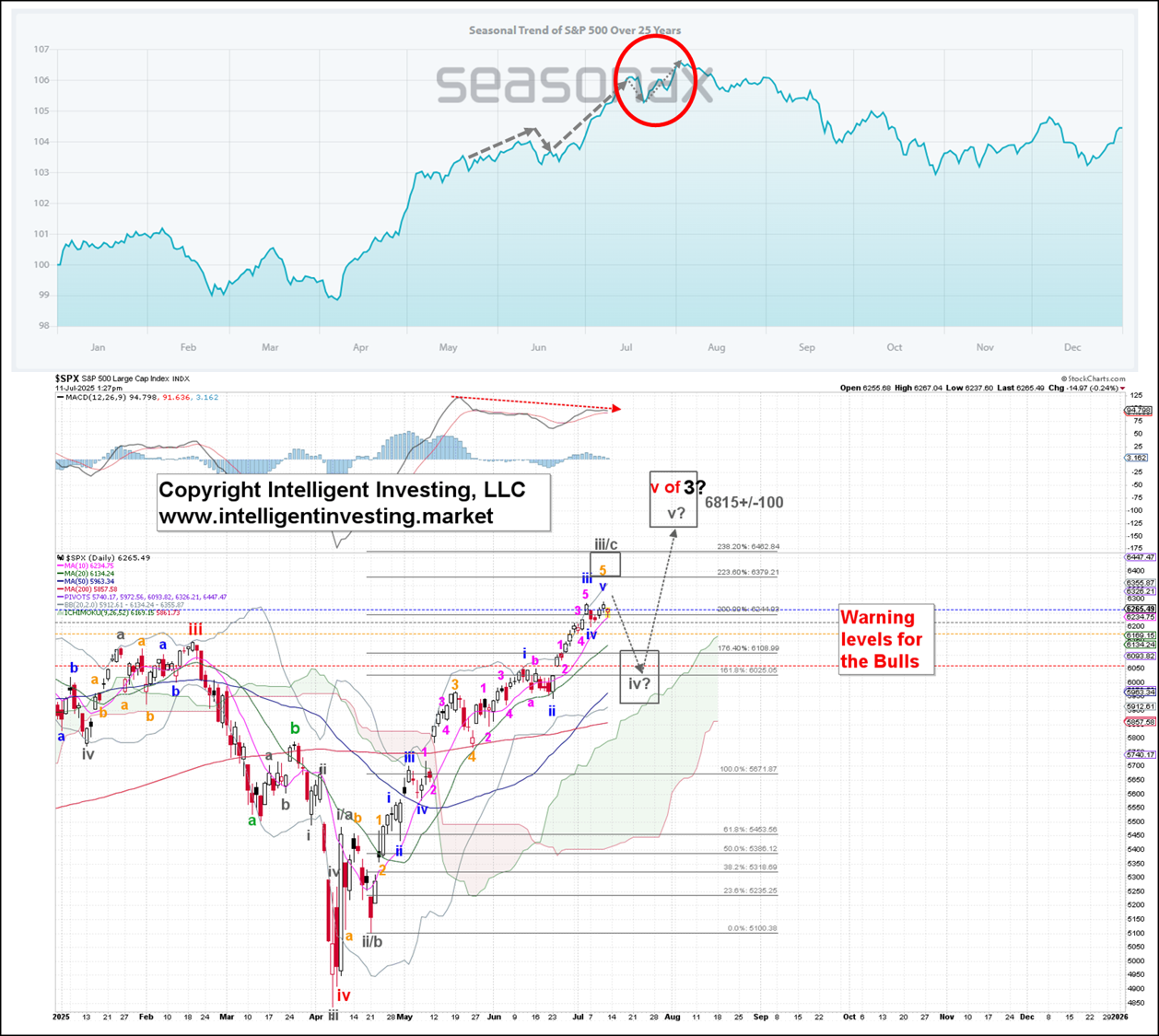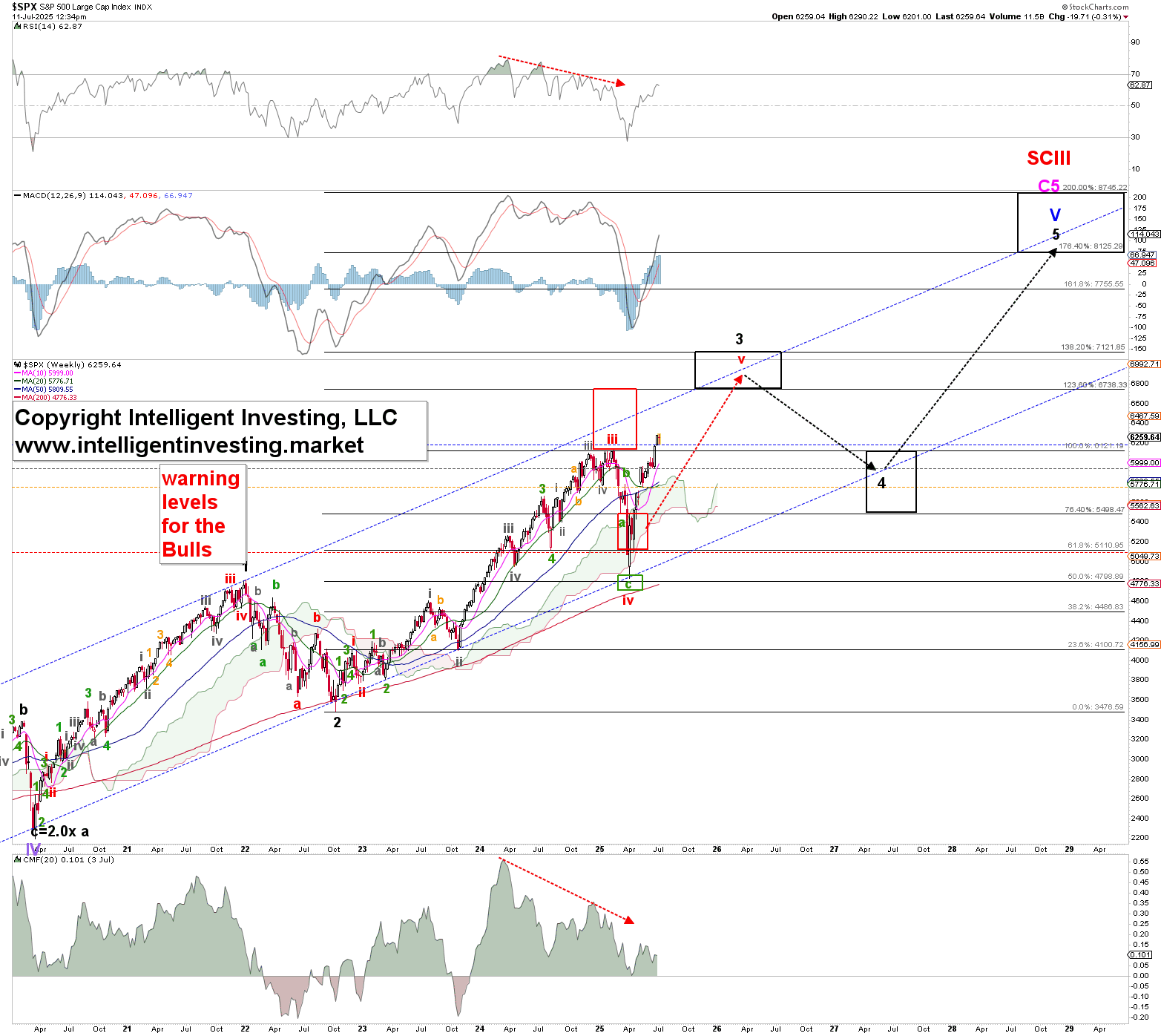Street Calls of the Week
In our previous update from June 20th, see here, when the S&P 500 (SPX) was trading at around $5960, we applied post-election year seasonality to our Elliott Wave (EW) Principle count and found
“…a high between June 8 and June 12 and a low between June 16 and June 22, … . As previously mentioned, the index peaked on June 11, hit a low on June 13, and has since returned to its prior level. So far, so good. Therefore, assuming the correlation holds, we can look further ahead, anticipating a low in the coming days followed by a 4- to 6-week rally.”
Fast forward, the SPX is now trading in the $6230s after the index bottomed out on June 23 at $5943. Therefore, the low was on time, and the 4–6-week rally is already nearing its end. The June 23 low was slightly shallower than expected, so we have adjusted our wave count to an extended, subdividing orange W-5 of the gray W-iii/c. See Figure 1 below.
Figure 1. Post-election year seasonality vs. our preferred short-term Elliott Wave count.
 The adjustment allows the current price action to align even more closely with typical post-election year seasonality, predicting a peak (gray W-iii/c) around July 16, a low (gray W-iv) on July 21, and a final high around August 2 (gray W-v): red circle in Figure 1. If the market continues to follow this pattern as it did in 2025, it also indicates that after August, the Bears will take control until at least late October.
The adjustment allows the current price action to align even more closely with typical post-election year seasonality, predicting a peak (gray W-iii/c) around July 16, a low (gray W-iv) on July 21, and a final high around August 2 (gray W-v): red circle in Figure 1. If the market continues to follow this pattern as it did in 2025, it also indicates that after August, the Bears will take control until at least late October.
The gray W-iii/c is expected to reach roughly $6380-6460, but we have our (raised) warning levels in place to indicate if the index will fall short of that range. Then, a gray W-iv should last about a week, ideally reaching around $6025+/-100, with the upper end preferred. After that, the gray W-v could peak at approximately $6815+/-100.
Based on the current waves, the $6815+/-100 level is right within the ideal, and our long-standing, third wave target zone of $6738-7121. Therefore, it could be forming a more significant top this summer, as we expect the black W-4 to last about one year, like the black W-2.
Figure 2. The SPX weekly chart with our preferred EW count.

